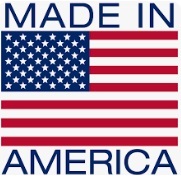Understanding Custom PVC Molding: Process, Applications, and Benefits
Created at : Apr 8, 2025
Custom PVC molding is a widely used manufacturing method that transforms polyvinyl chloride (PVC) plastic into unique, functional products tailored to specific needs. Due to its affordability, versatility, and durability, PVC remains a go-to material in industries such as construction, automotive, electronics, and consumer goods.
What Is PVC?
Polyvinyl chloride (PVC) is a thermoplastic polymer known for its excellent durability, flame resistance, and cost efficiency. It’s commonly found in everyday products, from pipes and window frames to electrical insulation and consumer packaging. PVC is favored for its:
- Resistance to chemicals and moisture
- Ability to be colored and shaped easily
- Strength and low maintenance requirements
These properties make PVC an ideal material for both standardized and highly customized manufacturing applications.
Custom PVC Molding Techniques
To create parts with precise dimensions and specific functionality, manufacturers rely on different molding techniques. Each method offers unique advantages depending on the application, design complexity, and production volume.
1. Injection Molding
Injection molding involves heating PVC until it becomes pliable and then injecting it into a custom mold cavity. Once cooled, the part takes on the shape of the mold. This technique is ideal for high-volume production of complex parts, such as:
- Pipe fittings
- End caps
- Electronic housings
2. Extrusion Molding
Extrusion molding pushes melted PVC through a die to create continuous lengths of uniform shapes. It’s perfect for products like:
- Window seals
- Weatherstripping
- Tubing and channels
Extrusion is especially beneficial for long or flexible parts that require consistency along their length.
3. Blow Molding
Blow molding is used to manufacture hollow items. In this method, a heated PVC tube is inflated with air inside a mold, creating containers such as:
- Bottles
- Reservoirs
- Enclosures
It’s commonly used in packaging and storage solutions.
4. Compression Molding
This process involves placing preheated PVC into a mold and compressing it to fit the shape. It’s ideal for larger or thicker parts where extreme precision isn’t required. Examples include:
- Industrial pads
- Heavy-duty gaskets
Advantages of Custom PVC Molding
Opting for custom PVC molded parts offers several key benefits:
- Tailored Design: Components can be made to meet exact specifications, including dimensions, textures, colors, and branding.
- Durability: Molded PVC parts are resistant to impact, moisture, UV exposure, and harsh chemicals.
- Efficiency: Molding processes allow for rapid production, ideal for both prototypes and full-scale manufacturing.
- Cost-Effective: PVC is an affordable material, and the molding process minimizes waste and labor costs.
Applications Across Industries
Custom PVC molding supports a broad range of industries by delivering durable, lightweight, and cost-efficient solutions:
- Construction: Window frames, pipe fittings, weather seals
- Automotive: Trim pieces, grommets, under-hood components
- Electronics: Cable insulation, switch housings
- Consumer Goods: Custom containers, packaging, kitchen accessories
Whether you're looking to develop a high-performance part for industrial use or a branded product for consumers, custom PVC molding offers the flexibility and reliability to bring your vision to life.
In conclusion, custom PVC molding is a cornerstone of modern manufacturing, offering unmatched adaptability and performance. Its various molding techniques ensure that virtually any idea—no matter how complex—can be realized efficiently and affordably. If your next project requires durable and precise plastic components, PVC molding may be the perfect solution.

